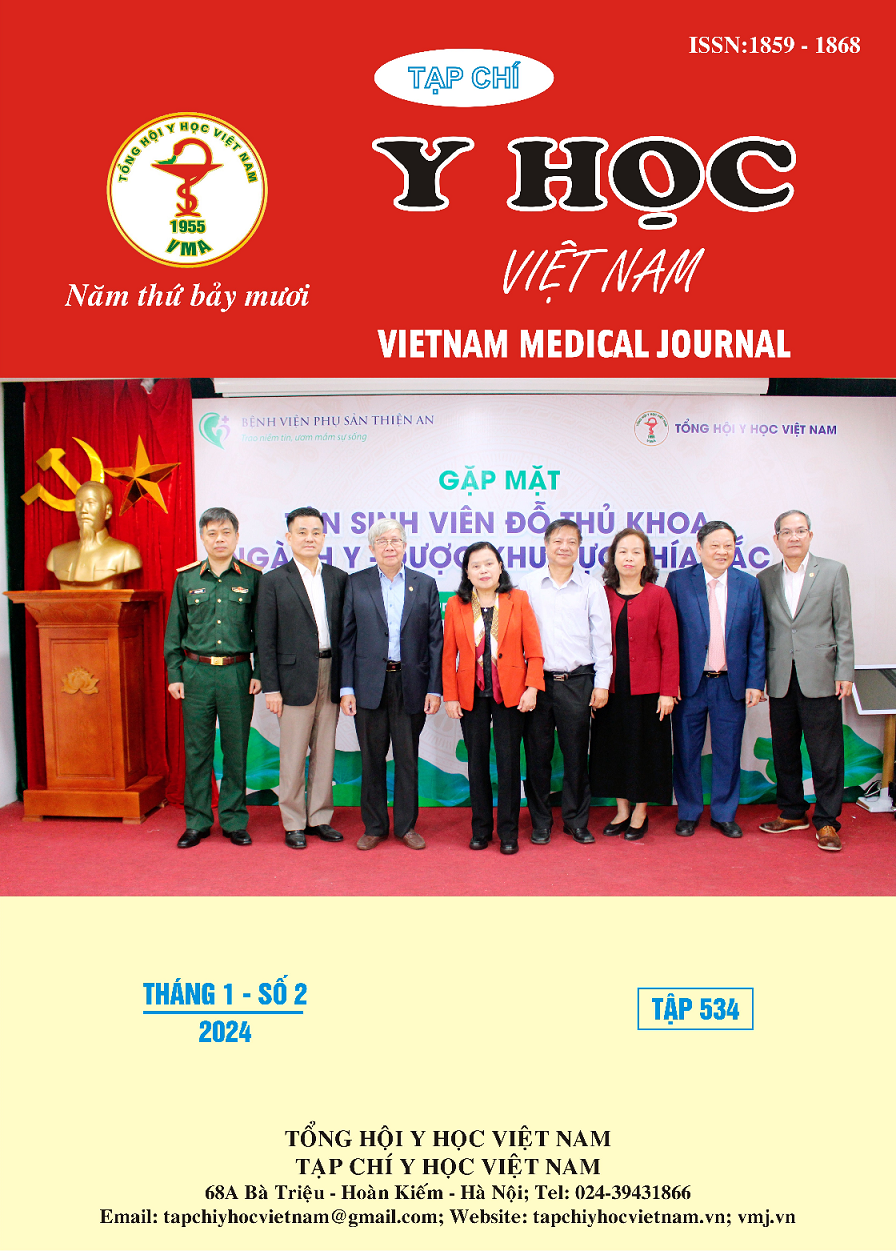SURVEY OF PATELLA BONE MORPHOLOGY IN VIETNAMESE POPULATION
Main Article Content
Abstract
Background: Total knee replacement is a common surgery, wherein patellar resurfacing poses a challenge for surgeons. Patellar resurfacing reduces the rate of revision, anterior knee pain, and increases patient satisfaction. However, accompanying complications such as: patellar instability, increased wear and loosening of instruments, patellar fracture, and avascular necrosis are shortcomings that have limited the widespread approval of patellar resurfacing. To overcome these complications, a clear understanding of the anatomical characteristics of the patella is essential. Objective: To determine the morphological characteristics of the patella using computed tomography scans. Methods: This study describes a series of cases involving the survey of 100 patellas from computed tomography scans of both legs of 50 Vietnamese individuals over 18 years old at the Department of Imaging Diagnostics, University of Medicine and Pharmacy Hospital, Ho Chi Minh City. The patella was reconstructed in a 3-dimensional model using Mimics Software System 21.0, and 7 patella indices were measured. A t-test was used to compare the normal distribution of quantitative variables, and the Mann-Whitney test was employed when the distribution was not normal through STATA 14.0 statistical software. Results: This study had an average age of 51.2 years old, and a male-to-female ratio of 1:1. The average patellar height and width were 40.13 mm and 43.07 mm, respectively. The average patellar section thickness was 9.88 mm, and the average patellar residual thickness was 11.39 mm. The average patellar cut height and width were 34.89 mm and 41.24 mm, respectively. The relative position of the center point of the patellar ridge compared to the center point of the patellar cut was 98% superior-medial and 2% superior-lateral. Conclusions: The data from this study may be valuable in preoperative planning and determining the location of the patella component during total knee replacement surgery. Additionally, the results of this study serve as the foundation for designing suitable artificial patellar devices for the Vietnamese population.
Article Details
References
2. Hofmann AA, Tkach TK, Evanich CJ, Camargo MP, Zhang Y. Patellar component medialization in total knee arthroplasty. The Journal of arthroplasty. Feb 1997;12(2):155-60.
3. Assi C, Kheir N, Samaha C, Deeb M, Yammine K. Optimizing patellar positioning during total knee arthroplasty: an anatomical and clinical study. International orthopaedics. Dec 2017;41(12):2509-2515.
4. Huang AB, Luo X, Song CH, Zhang JY, Yang YQ, Yu JK. Comprehensive assessment of patellar morphology using computed tomography-based three-dimensional computer models. The Knee. Dec 2015;22(6):475-80.
5. Yoo JH, Yi SR, Kim JH. The geometry of patella and patellar tendon measured on knee MRI. Surgical and radiologic anatomy: SRA. Dec 2007;29(8):623-8.
6. Mei X, Ding H, Meng J, Zhao J. Anthropometric measurements of patellar ridge using computed tomography-based three-dimensional computer models. Journal of orthopaedic surgery and research. Jul 6 2021;16(1):436.
7. Kim TK, Chung BJ, Kang YG, Chang CB, Seong SC. Clinical implications of anthropometric patellar dimensions for TKA in Asians. Clinical orthopaedics and related research. Apr 2009;467(4):1007-14.


